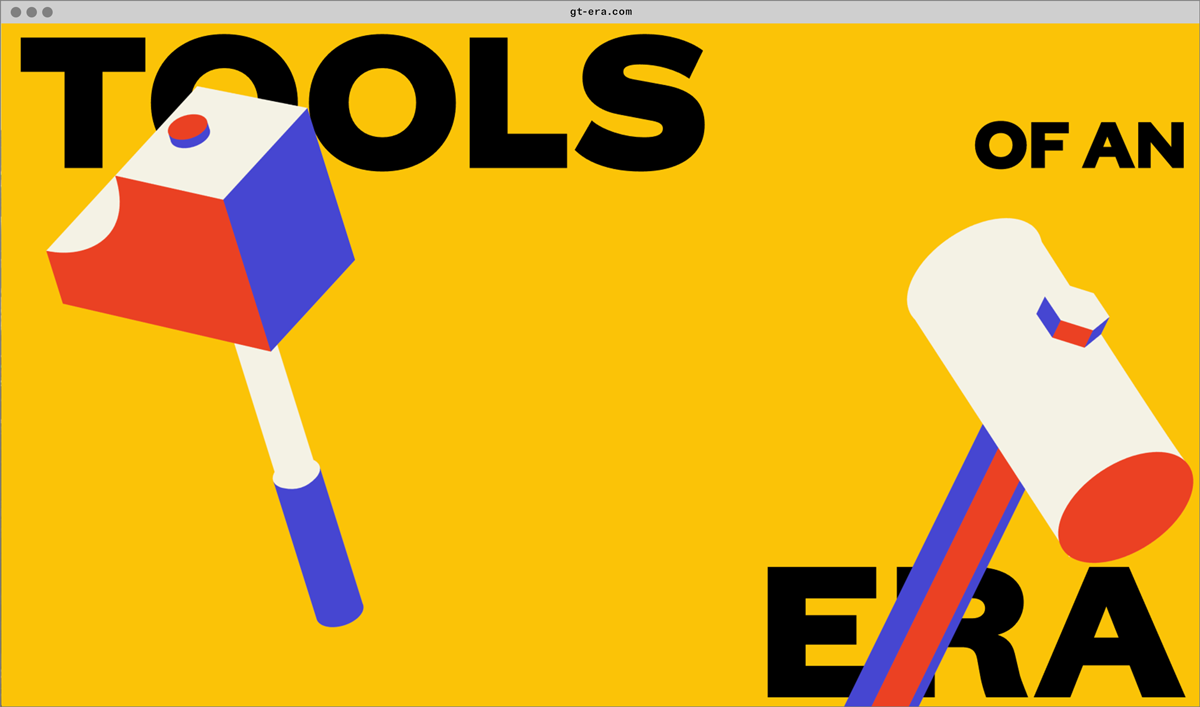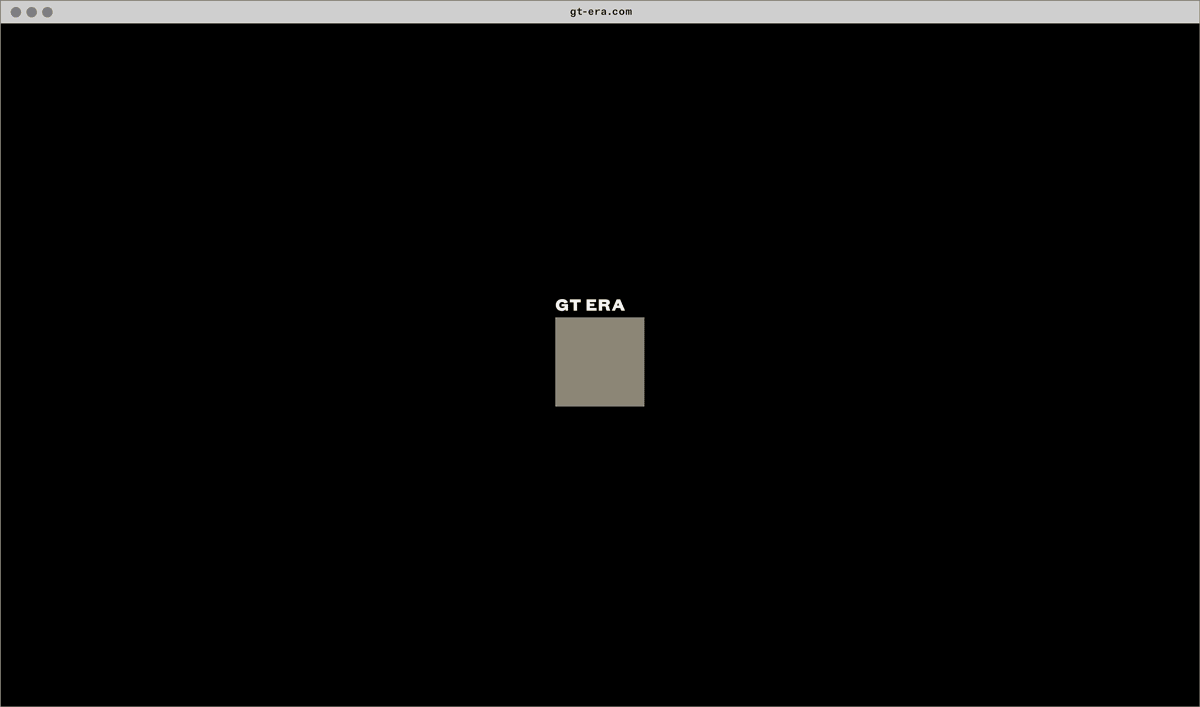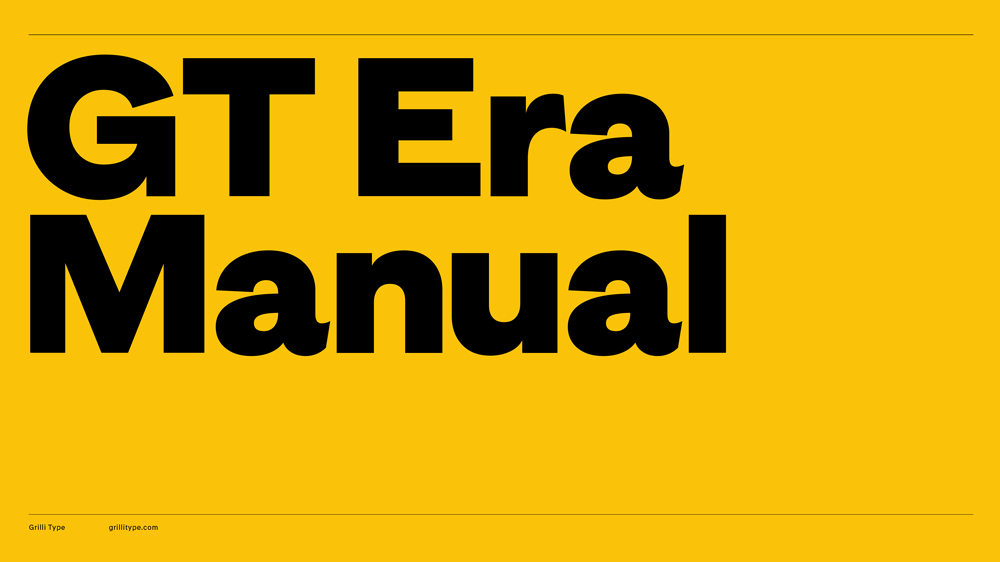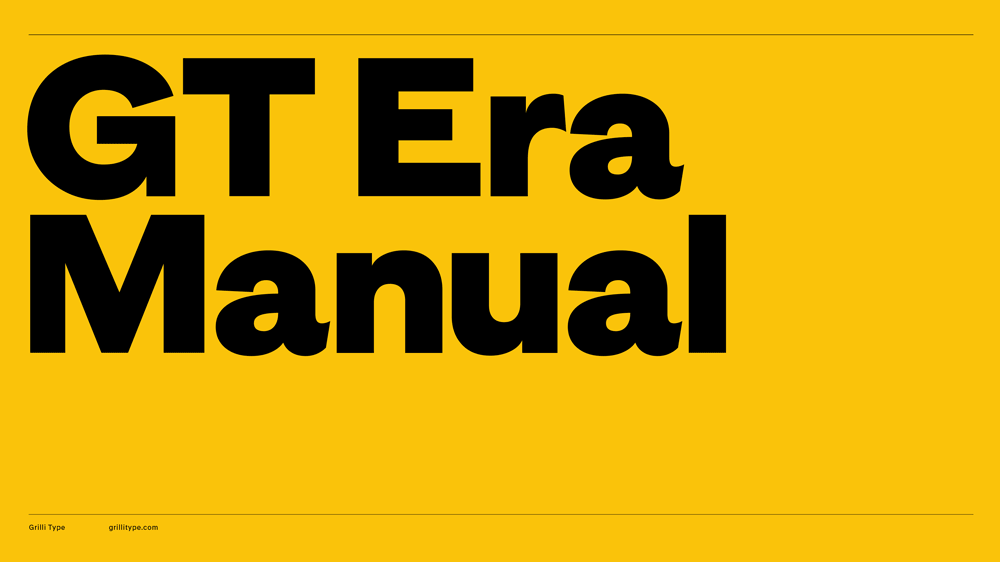GT Era
Family overview
- Display
- Thin Oblique
- Light Oblique
- Regular Oblique
- Medium Oblique
- Bold Oblique
- Heavy Oblique
- Black Oblique
- Text
- Thin Oblique
- Light Oblique
- Regular Oblique
- Medium Oblique
- Bold Oblique
- Heavy Oblique
- Black Oblique
Subfamilies
- Display ThinPainting, especially, has advanced with almost fantastic strides during the last decades, and it has only recently been freed from practical meaning and liberated from the necessity of responding to the many purposes it had earlier been forced to serve.
- Display Thin ObliqueThe creative human being knows (and suffers from it) that the inherent values of life are being destroyed under the pressure of moneymaking, competition, and trade.
- Display LightNot the single piece of work, nor the highest individual attainment must be emphasized, but instead the creation of the commonly usable type, development toward “standards”.
- Display Light ObliqueThe stronger the aesthetic experience the more completely will the objective, natural appearance of the object of the experience be annihilated.
- Display RegularERNST MAY, Mitarbeiter KAUFMANN, Frankfurt am Main, Siedlung Praunheim bei Frankfurt am Main (1926)
- Display Regular ObliqueWe should accept nothing as predetermined, as constituted for eternity. Every firmly established, familiar thing can be shifted about and brought under a new and, primarily, unfamiliar order.
- Display MediumOne proceeds by way of the uniformly compressed circle, of which the oval is a result, to free basic planes. These are, to be sure, without angles but, just as is possible in the case of angular forms,
- Display Medium ObliqueThis meant evolving goods specifically designed for mass-production. Our object was to eliminate every drawback of the machine without sacrificing any one of its real advantages.
- Display BoldOur modern system of production is imposed labor, a senseless pursuit, and, in its social aspects, without plan; its motive is to squeeze out profits to the limit. This in most cases is a reversal of its original purpose.
- Display Bold ObliqueMARCEL BREUER (Ungarn), Dessau, Anhalt — Modell zu eine m Etagenhaus für Kleinwohnungen (1924)
- Display HeavyThey became, for instance, the stimulus for a new typography; they affected photography, advertising, the motion picture, the theater, and have had many repercussions on our whole life today.
- Display Heavy ObliquePainting, especially, has advanced with almost fantastic strides during the last decades, and it has only recently been freed from practical meaning and liberated from the necessity of responding to the many purposes it had earlier been forced to serve.
- Display BlackSo much for technique! But what about beauty? The New Architecture throws open its walls like curtains to admit a plenitude of fresh air.
- Display Black ObliqueEach of the various people looking at the cow sees her in a way which is related to his occupation and his talents. The butcher sees the cow primarily as so many pounds of meat, so many pounds of fat, and so many pounds of bones.
- Settings
Typeface information
GT Era reimagines the warmth and idiosyncrasies of early grotesk typefaces for our own era. These pre-modernist tools were being pushed to their extremes in the radical designs of the modernist movements—like Bauhaus and De Stijl—of the period. The typeface shuns neutrality and embraces friction, championing recognition over uniformity and flavor over conformity.
Typeface features
OpenType features enable smart typography. You can use these features in most Desktop applications, on the web, and in your mobile apps. Each typeface contains different features. Below are the most important features included in GT Era’s fonts:
- SS01
- Alternate g
Painting
Typeface Minisite


- Visit the GT Era minisite to discover more about the typeface family’s history and design concept.

